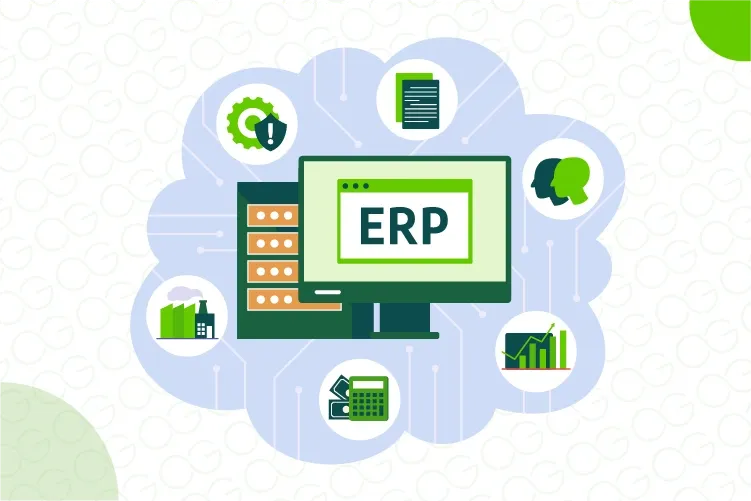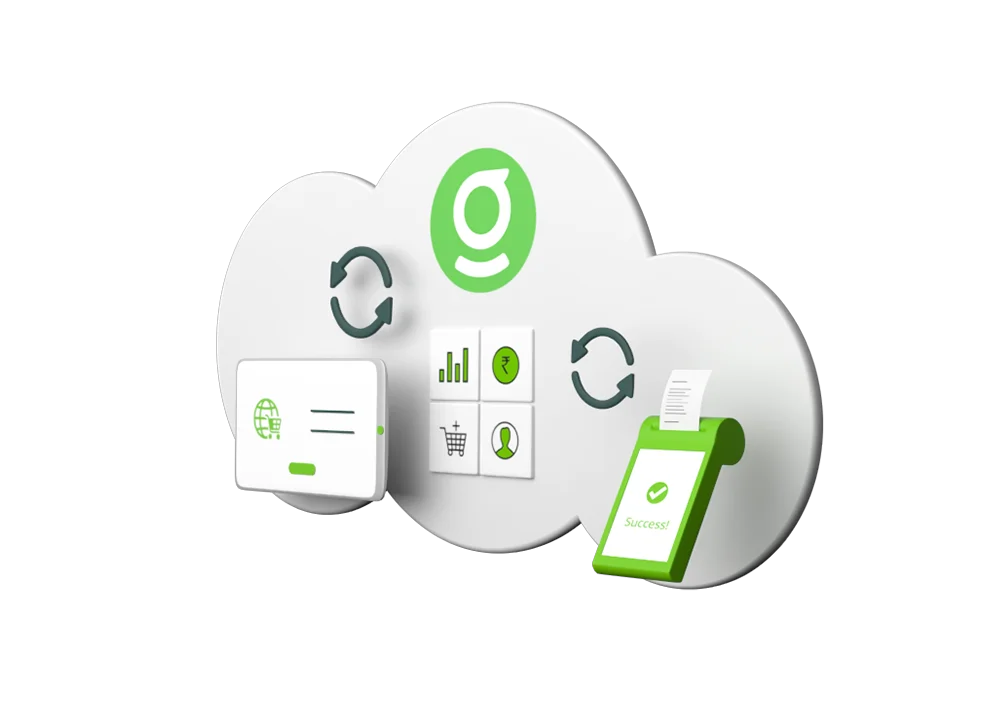Why India’s Tier 2 Retail Boom Demands Scalable ERP Software — Not Just POS Upgrades

India’s retail landscape is evolving—beyond the metro buzz, Tier 2 and Tier 3 cities are taking the lead. New malls rose where there were only bazaars. Local brands are scaling up. Global ones are moving in. Energy has changed. Behind this shift is a new kind of growth: aspirational, tech-savvy, and decentralized. It’s no longer about expanding reach—it’s about expanding capabilities. Retailers in Tier 2 cities are developing retail ecosystems that rival those of their metro counterparts.
Even now, too many firms are still stuck with outdated POS systems designed for a single shop, rather than in today's complex online and offline world. That’s the disconnect. Instead of patching together bits of hardware, retailers need a full ERP suite that pulls inventory, supply chain, sales, money, and analytics into one smooth engine.
This blog explores a hard but necessary truth: why the next phase of Indian retail, especially in Tier 2 cities, demands more than stopgap tech. It demands ERP software for Tier 2 retail markets, purpose-built to scale with the ambition of the cities it serves.

Upgrade retail today—power growth with scalable ERP.
The Changing Consumer in Tier 2 India
Meet the new‑age Tier 2 consumer. They scroll, compare, and switch channels without a second thought. A study shows e‑commerce in Tier 2/3 cities grew to 60% of national e‑commerce demand in 2023, with 30% projected annual growth.
These consumers expect:
- Variety and speed: Same-day delivery, dynamic inventory.
- Personalized experiences: Curated product suggestions, and regional preferences.
- Seamless channels: Shop online, pick up in-store, or social commerce via WhatsApp or regional apps.
They behave like tech consumers. Bain reports smaller-city shoppers in electronics and appliances spend as much as metro buyers. This underpins that Tier 2 consumers aren’t satisfied with isolated POS systems—they demand end-to-end management that scales, adapts, and delivers, and ERP for retail industry is the answer.

Tier 2 is rising—equip it with real ERP power with Ginesys
The Myth of POS-Only Modernization
Walk into any thriving retail store in Tier 2 Indian city—think Jaipur, Kochi, Indore—and chances are, the POS system looks modern enough. Digital receipts, QR-based payments, and maybe even a flashy touchscreen UI. It seems like progress but look beyond the counter, and a different story unfolds. Here’s what most retailers in these emerging cities get wrong: they assume upgrading POS is modernization. It’s not. It’s patchwork.
POS systems are designed to manage the sales at the counter—not the chaos in the backend. Inventory tracking? Often done on Excel sheets. Demand forecasting? Gut feeling. Supply chain visibility? Non-existent. This becomes a structural flaw.
What Tier 2 retailers need is scalable ERP software for retail, built for a single store as well as for multi-location management, purchase planning, and integrated financials. Because the shiny POS system couldn’t answer the most basic operational question: What’s selling, where, and how fast?

The Hidden Costs of Fragmentation
Fragmentation in retail is expensive. Start with inventory mismatch. When systems don’t talk to each other, you end up with stockouts in high-demand locations and overstocking in low-demand ones. According to a 2024 Deloitte India report, inventory distortion costs Indian retailers an estimated ₹60,000 crore annually. That’s a systemic leak.
And the damage doesn’t stop there. Poor supply chain coordination delays fulfillment, especially when store managers are calling suppliers manually or waiting for emails to approve stock movements. In a hyper-competitive Tier 2 market where same-day delivery is becoming an expectation, this is brand-damaging.
Many grocery retailers—particularly those operating across multiple outlets with a central warehouse—struggle with seasonal inventory imbalances when they lack integrated Tier 2 city retail software in India. Research from NetSuite underscores this common pain point: without real-time inventory visibility and automated replenishment, retailers frequently face simultaneous stockouts in some locations and overstock in others—resulting in both lost sales and wasted products. This highlights a core limitation of outdated systems like spreadsheet-based or POS‑only setups: they simply can't support the agility required during peak seasons.
In contrast, A good Retail ERP fixes the cracks. Shared numbers, automatic forecasts, and location-linked updates drive smarter decisions. Hence, it’s no surprise that more businesses are turning to ERP software for Tier 2 retail markets. These tools are built for complexity: promotions across locations, customer segmentation, loyalty program integration, and even GST-compliant invoicing—all managed within a single system.

Grow beyond POS—unlock retail intelligence with Ginesys’ ERP
The ERP Shift: From Cost Center to Growth Engine
Once upon a time, people thought ERP systems were just clunky, pricey tools for keeping books and tracking inventory. That framing is now obsolete. These days, a good retail ERP acts like the digital backbone that keeps leaders one step ahead of rival stores
What brought this shift? Everything. Retail management software for mid-sized stores is a real-time command center:
- Procurement decisions guided by up-to-the-minute vendor stats
- Warehouses synced across geographies
- POS terminals sharing sales data with e-commerce sites
- Returns, exchanges, and refunds flow seamlessly across channels
With the right ERP software, a chain of five mid-sized stores in Nashik can know, at 11:02 AM, that red kurtis are underperforming in their Raipur outlet and reroute stock accordingly. No guesswork. Just signal and respond. This isn’t hypothetical. It’s how retailers like Citykart, Zudio, and V-Mart are scaling. And none of this is possible without ERP software benefits for retail chains that go far beyond inventory.
Why Scalability Is the Real Keyword Here
The mistake most growing retailers make? Assuming today’s system will stretch for tomorrow’s size. It won’t.
Imagine a fashion retailer in Bhopal doubling its outlets over six months. Suddenly, they need:
- Multi-store inventory sync
- Role-based dashboards for managers
- Real-time sales reconciliation
- Integrated CRM to personalize offers
- GST compliance across states
Now imagine trying to manage that with spreadsheets or disconnected POS terminals. That’s chaos waiting to happen. What ERP software for Tier 2 retail markets offers is scalability. Scalability means:
- Multi-location deployment without breaking workflows
- Multi-format adaptability—mall kiosk or flagship store, same backend
- Multi-channel coordination—offline, online, mobile, social
This is where Tier 2 city retail software in India must punch above its weight. Because Tier 2 players don’t stay in Tier 2 for long. Many are venture-funded and many have global ambitions. And they can’t afford to rebuild their tech stack mid-flight. They need scalable ERP software for retail that grows with them—not one they outgrow.
The Role of Technology in Democratizing Retail
Until recently, building a successful retail chain in India almost always meant starting in a metro. But the last five years have rewritten that rulebook with Tier 2 and Tier 3 cities reshaping India's retail battlegrounds. The reasons are clear and measurable: over 500 million smartphone users in India (TRAI, 2024), more than 11 billion UPI transactions per month (NPCI, April 2025), and a logistics infrastructure that now covers over 95% of India’s PIN codes (India Post, 2024).
Technology has democratized access. A boutique in Lucknow or a fashion retailer in Coimbatore now has the same access to supply chains, digital payments, and customer analytics as a flagship store in Mumbai. But access is just the beginning. The real advantage comes when these retailers leverage ERP software to operate like national brands without national budgets.
Retail ERP solutions can transform how inventory is managed, how vendors are paid, how promotions are tracked, and how customer data is used. The old question used to be "Can you afford ERP?" Today, it's "Can you afford to operate without it?" The myth that ERP is a tool for big-budget corporations is outdated. In reality, ERP is not for the elite—it's for the ambitious. For those aiming to scale, adapt, and thrive in India’s fragmented yet booming retail ecosystem, especially in Tier 2 cities, ERP is the differentiator.
The Moment of Truth: Is Your Business Built to Grow?
Let’s get real for a moment. Say your next Instagram campaign goes viral. You wake up to 5x your usual orders. Can your current system handle that surge? If you opened 10 new stores tomorrow, would your data sync seamlessly across them? Could you launch a D2C site in two weeks—with live inventory, automated taxes, and vendor workflows? If the answer to any of these is "not sure" or "probably not," your tech stack is silently holding you back.
Modern growth is modular, fast, and often chaotic. It needs systems that are integrated by design, not duct-taped by necessity. Retail ERP software enables:
- Inventory visibility across all stores and warehouses
- Automated GST compliance, updated in real time
- Centralized vendor and purchase management
- Dashboard-driven decisions based on real data
ERP for retail industry players is about handling complexity and unlocking agility. For mid-sized businesses in India’s Tier 2 cities, agility is the only way to win. Whether it’s dealing with supply chain shocks, seasonal surges, or omnichannel pivots, your systems have to flex when your business does.
So, ask yourself: are you building a business for today, or a business built to grow? If it’s the latter, you need more than a smart POS. You need ERP software benefits for retail chains that anticipate your next five moves—not just your last transaction.

Enter Ginesys: The ERP Engine Behind Tier 2 Success Stories
Walk down the main street of Bhubaneswar, Nashik, or Madurai and you'll spot something telling; retail stores no longer look like "small-town" operations. They're sleek, digitized, and ambition fueled. Yet behind the counters, many still run on fragmented systems or entry-level POS software. As competition surges in Tier 2 and Tier 3 cities, this is a risk.
Ginesys steps in here, not merely as a tool, but as an entire ecosystem. Recognized as India's leading cloud-based Retail management software for mid-sized stores, Ginesys is purpose-built to support the unique challenges and explosive potential of Tier 2 city retailers.
Why Ginesys stands out for Tier 2 retailers:
- End-to-end compliance: Built-in GST management.
- Customer loyalty: Automated programs for retention and personalized engagement.
- Efficient inventory management: Multi-warehouse syncing and control.
- Promotion and pricing management: Centrally controlled offers and discounts.
- Omnichannel analytics: Real-time performance insights across all channels.
Ginesys One Ecosystem Offers:
In a market where timing is everything, the Ginesys One ecosystem delivers agility. From merchandising to promotions, from procurement to performance analytics, it puts the entire retail engine under one digital roof—a rare feat among ERP software for Tier 2 retail markets. It offers:
- All-in-one platform: Unlike conventional systems that silo POS from inventory or e-commerce from accounting, Ginesys unifies them. It provides ERP solutions that seamlessly integrate POS, ERP, e-commerce, and omnichannel needs for merchandising, procurement, promotions, and analytics. This lays the digital infrastructure to support 10x growth.
- Smartly Localized Infrastructure: With offline POS support for low-bandwidth areas—a real pain point in many Tier 2 cities—Ginesys ensures operations never stall, even when the internet does.
- Seamless E-commerce Integration: Ginesys connects with leading e-commerce and fulfillment platforms like Shopify, ONDC, and Unicommerce. This is crucial because Tier 2 shoppers are now just as omnichannel-savvy as their metro counterparts. Any retailer still managing their physical and online stores separately is already behind.
- A digital backbone: The Ginesys One ecosystem functions as the operational nerve center for ambitious retailers—unifying sales, inventory, finance, warehousing, and e-commerce. This level of integration is especially critical in Tier 2 and 3 markets, where fragmented tech stacks often hinder speed and coordination. With Ginesys One, retailers get truly scalable ERP software for retail, built to support complex workflows and cross-platform agility.
- Centralized control: Ginesys One offers a single pane of control that allows retailers to monitor performance, enforce pricing consistency, sync promotions, and manage replenishment centrally—without sacrificing local responsiveness.
In a market where timing is everything, the Ginesys One ecosystem delivers agility. It transforms retail management from reactive to predictive.

Scale smarter, not harder — unlock growth with Ginesys
Final Takeaway: Don’t Just Catch the Wave—Surf It with Strategy
India's next 100 million consumers won’t come from Delhi or Mumbai. They'll come from Surat, Siliguri, Ranchi, and beyond. This shift is happening today. That’s why scalable ERP software for retail becomes non-negotiable. It offers control, insight, and automation that empower retailers to not just keep up but lead. The ERP software benefits become clear when your supply chain doesn’t break under pressure, when your sales data drives real-time decisions, and when every store feels like part of a single, smart enterprise.
Retail ERP solutions like Ginesys One are designed exactly for this—bringing agility to mid-sized retail chains while maintaining the rigor of enterprise-grade infrastructure. With the right technology in place, even a single-store operator can think like a nationwide brand.
Let’s build the future of Tier 2 retail—intelligent, integrated, and unstoppable—with Ginesys One. Book a demo with Ginesys today and take the first step.
